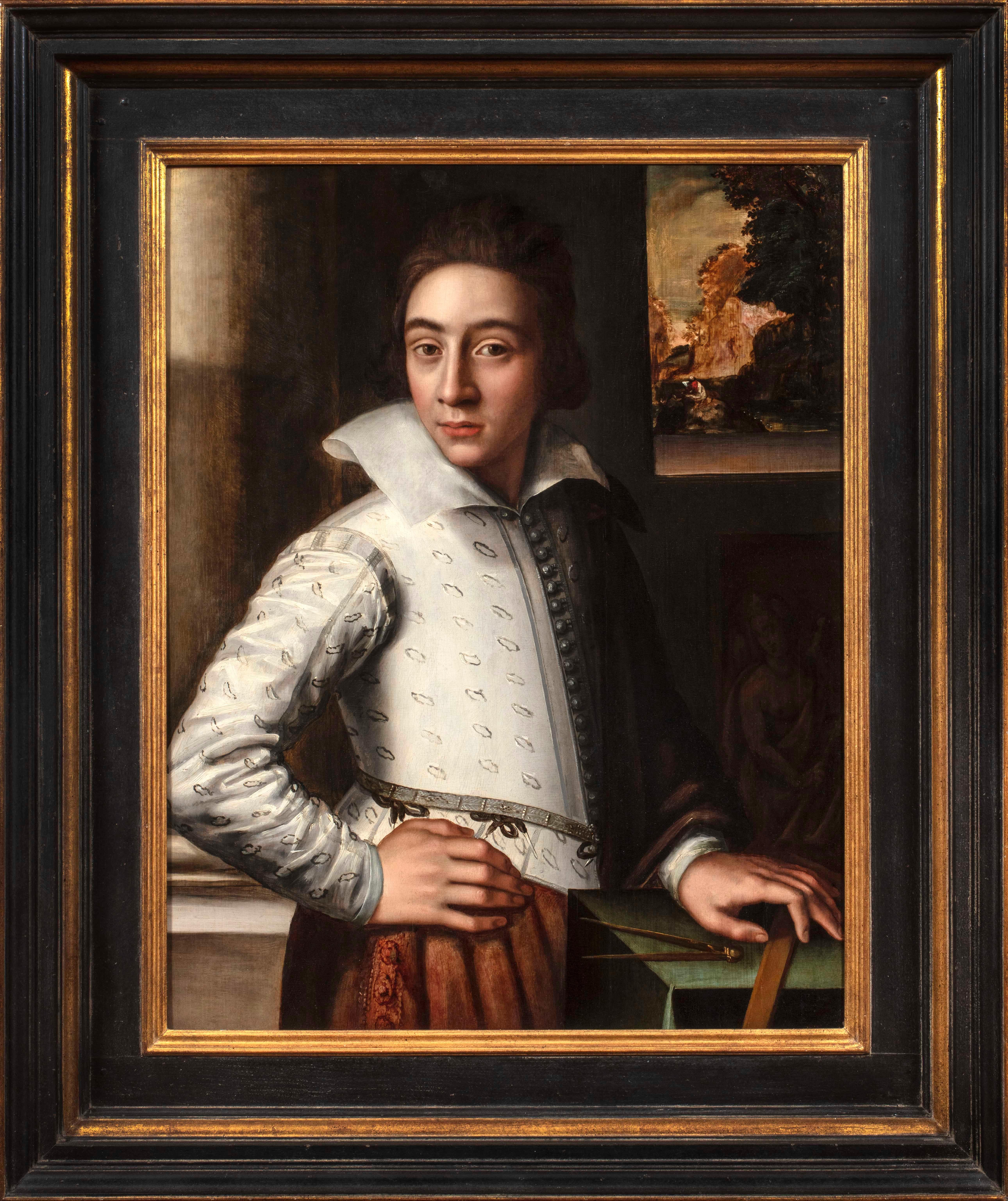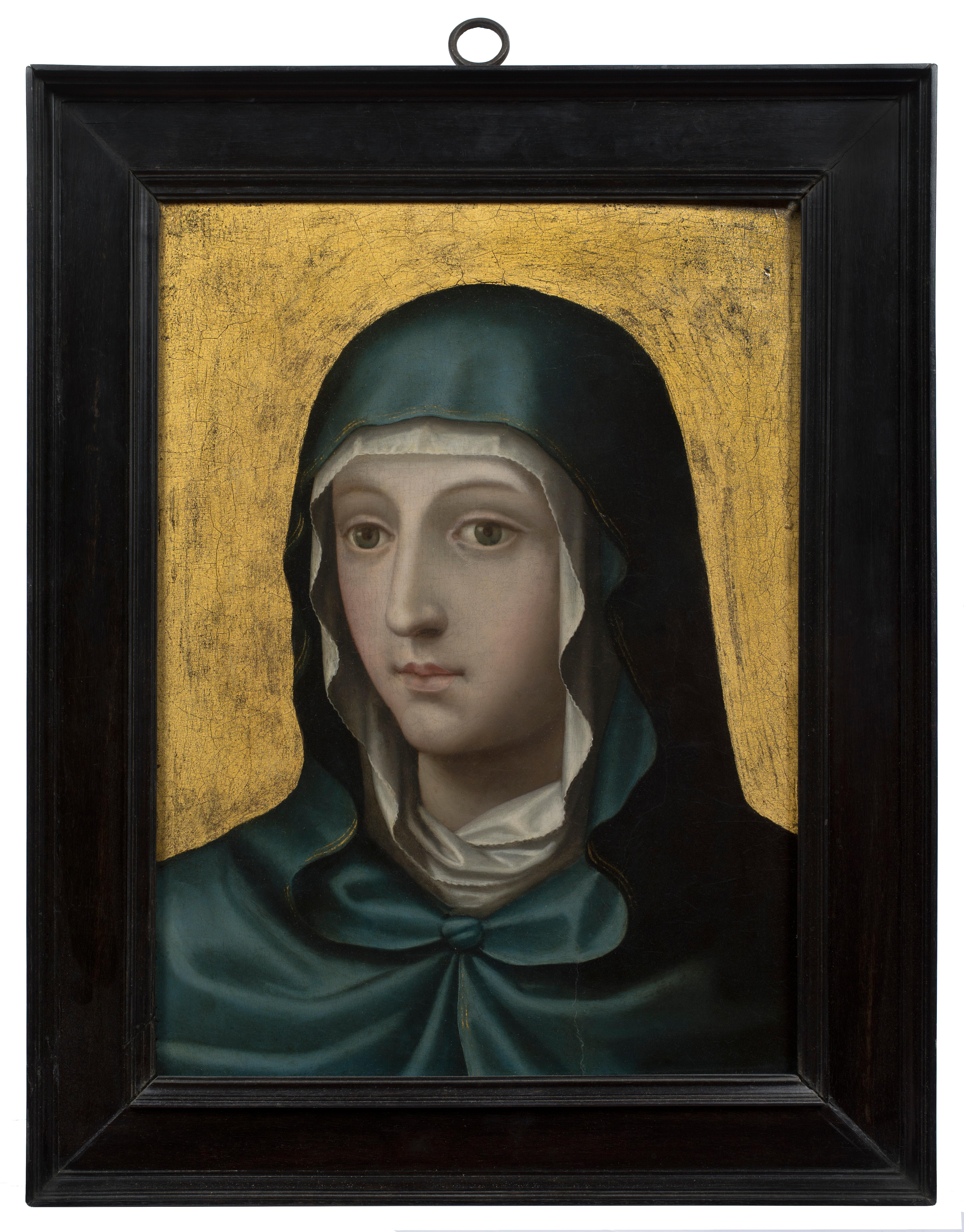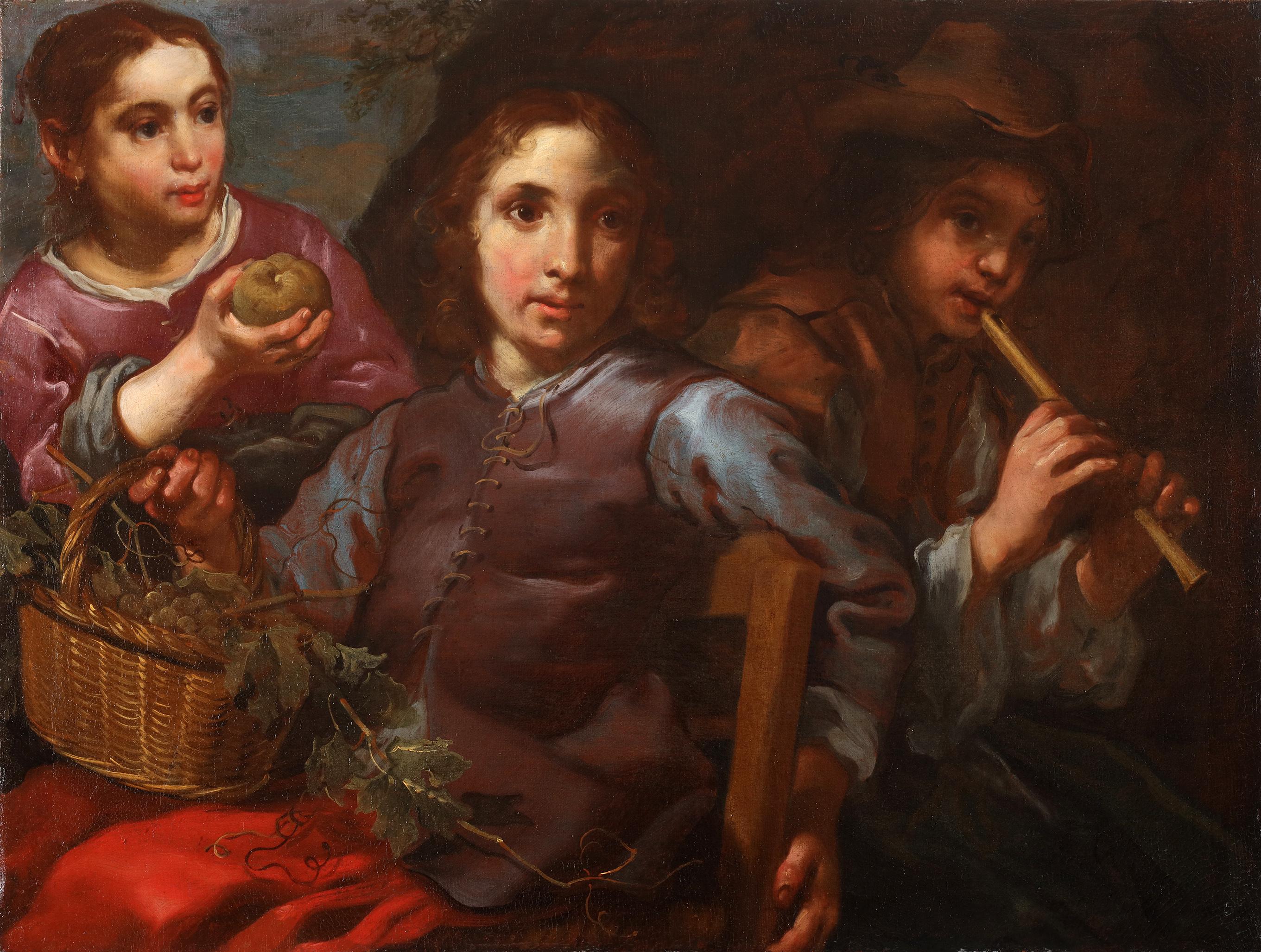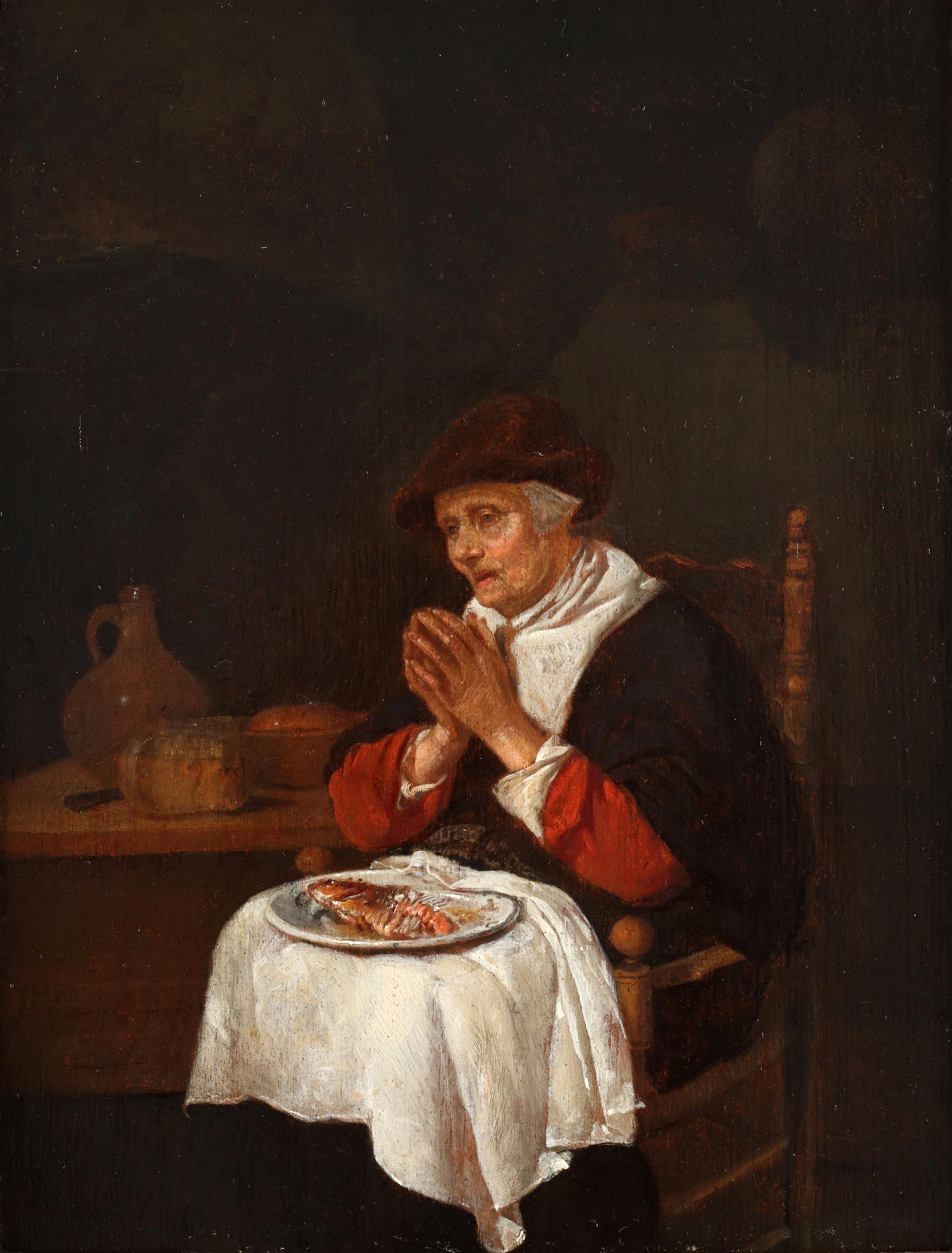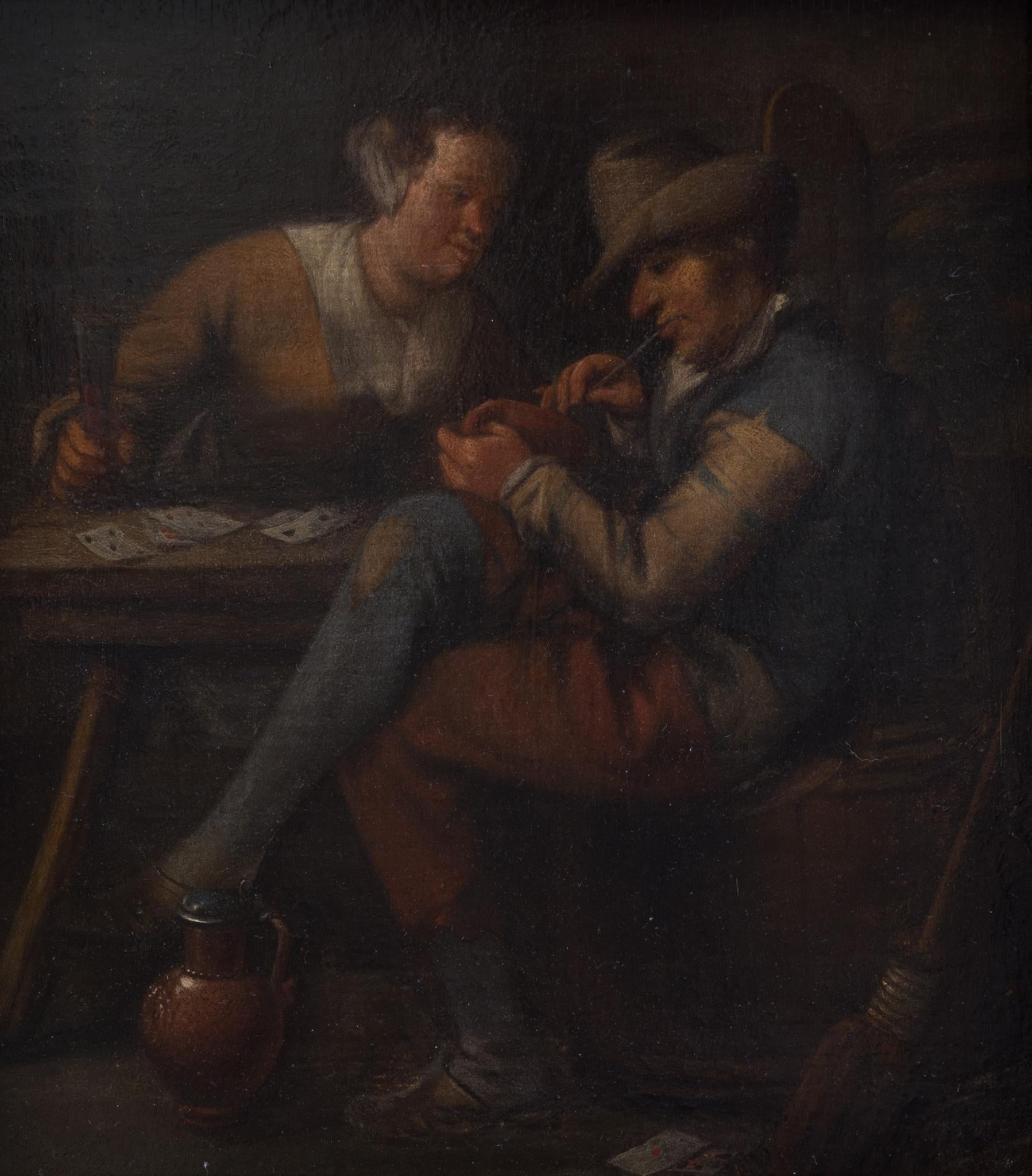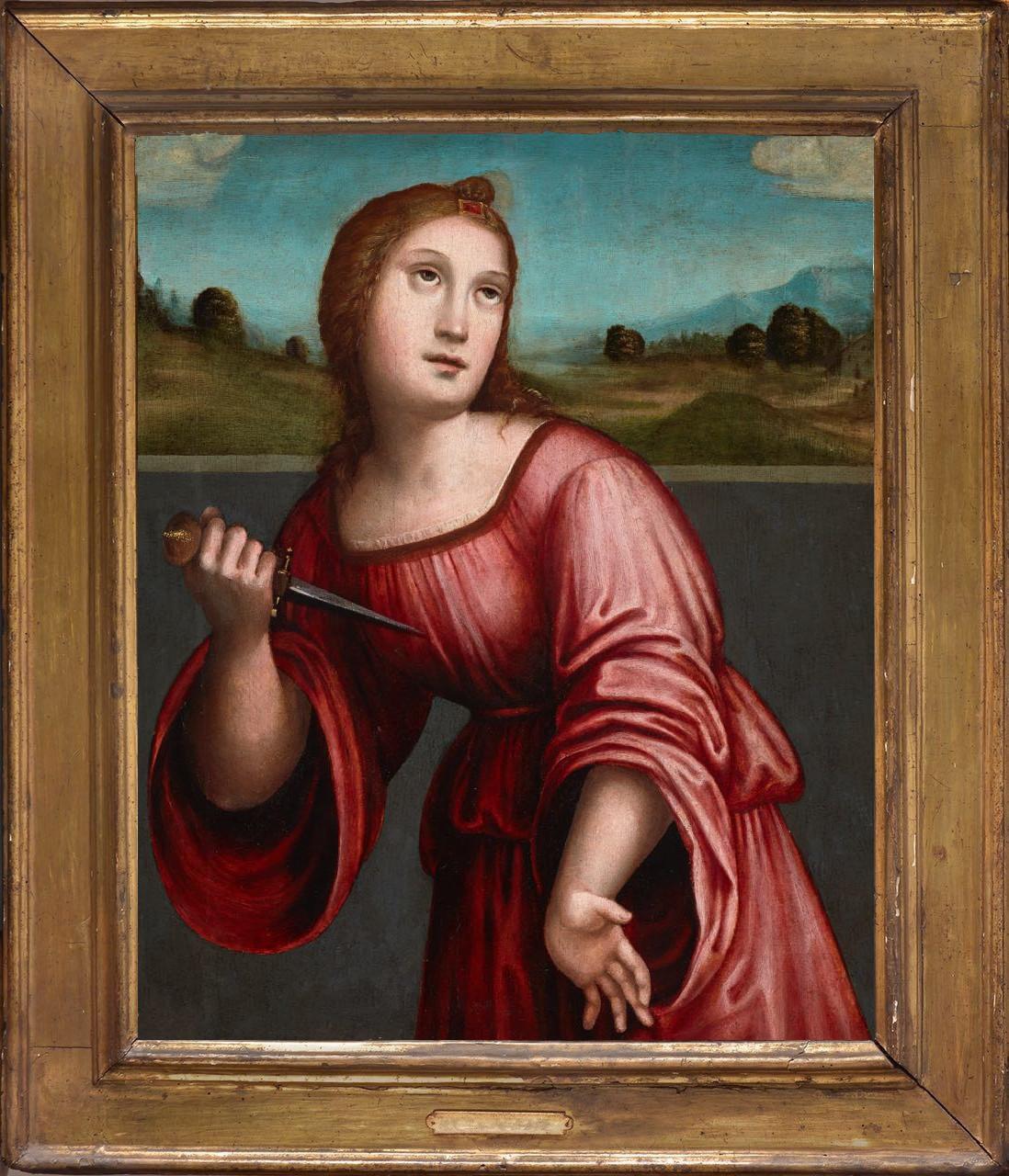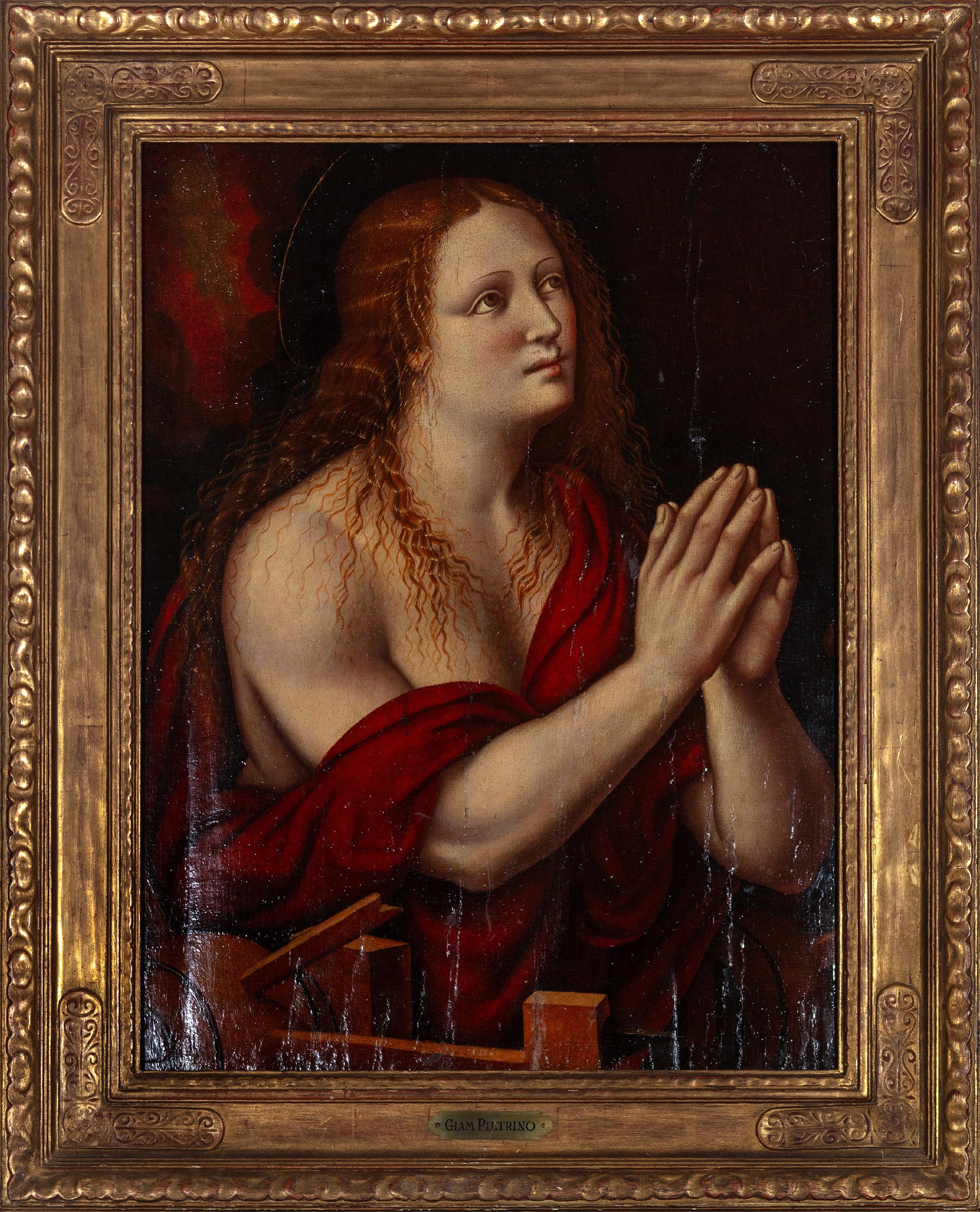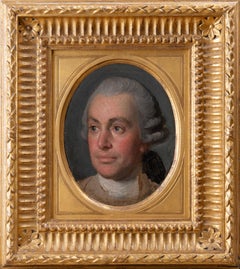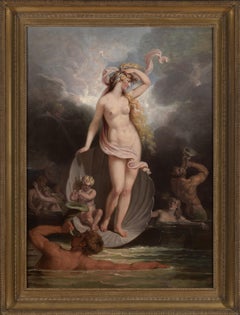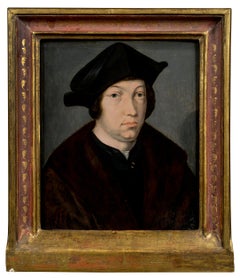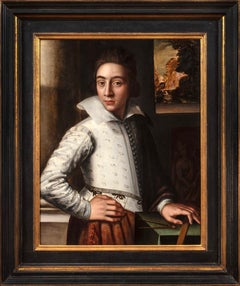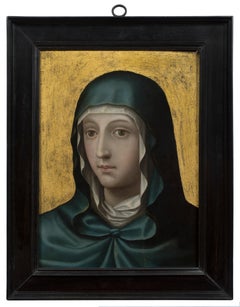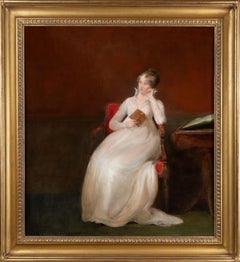
Portrait of Marianne Langham
View Similar Items
Want more images or videos?
Request additional images or videos from the seller
1 of 8
Jacques-Laurent AgassePortrait of Marianne LanghamCirca 1808
Circa 1808
About the Item
- Creator:Jacques-Laurent Agasse (1767 - 1849)
- Creation Year:Circa 1808
- Dimensions:Height: 23 in (58.42 cm)Width: 21 in (53.34 cm)
- Medium:
- Movement & Style:
- Period:
- Condition:
- Gallery Location:London, GB
- Reference Number:1stDibs: LU150727742152
About the Seller
5.0
Recognized Seller
These prestigious sellers are industry leaders and represent the highest echelon for item quality and design.
1stDibs seller since 2021
More From This SellerView All
- 18th century portrait of the painter Nathaniel DanceLocated in London, GBCollections: Robert Gallon (1845-1925); Private Collection, UK. Oil on canvas laid down on panel Framed dimensions: 11.5 x 10 inches This highly engaging, previously unpublished portrait by Johan...Category
18th Century Old Masters Portrait Paintings
MaterialsOil, Wood Panel, Canvas
- 19th century portrait painted in St Petersburg in 1819Located in London, GBSigned, inscribed and dated, lower right: 'Geo Dawe RA St Petersburgh 1819', also signed with initials, lower centre: 'G D RA'; and signed and inscribed verso: 'Geo Dawe RA Pinxit 1819 St Petersburgh'; Also inscribed on the stretcher by Cornelius Varley with varnishing instructions. Collections: Private collection, UK, 2010 Literature: Galina Andreeva Geniuses of War, Weal and Beauty: George Dawe...Category
19th Century Old Masters Portrait Paintings
MaterialsOil, Canvas
- 18th century allegorical painting of The Triumph of BeautyLocated in London, GBExhibited: London, Royal Academy, 1800, no. 93 What was happening in British history painting in around 1800? In recent discussions of the emergence of a British School of history painting following the foundation of the Royal Academy in 1768, this is a question which is rarely posed and one which is not easily answered. Examination of surviving Royal Academy exhibition catalogues reveals a profusion of artists’ names and titles, few of which remain immediately recognizable, whilst endeavours to explain the impact of exhibition culture on painting - such as the 2001 Courtauld show Art on the Line - have tended to focus on the first and second generation of Royal Academician, rather than young or aspiring artists in the early nineteenth century. This makes the discovery and identification of the work under discussion of exceptional importance in making sense of currents in English painting around 1800. Executed by Edward Dayes...Category
18th Century Old Masters Figurative Paintings
MaterialsCanvas, Oil
- Early oil depicting the Great Fire of LondonLocated in London, GBThe Great Fire of London in September 1666 was one of the greatest disasters in the city’s history. The City, with its wooden houses crowded together in narrow streets, was a natural fire risk, and predictions that London would burn down became a shocking reality. The fire began in a bakery in Pudding Lane, an area near the Thames teeming with warehouses and shops full of flammable materials, such as timber, oil, coal, pitch and turpentine. Inevitably the fire spread rapidly from this area into the City. Our painting depicts the impact of the fire on those who were caught in it and creates a very dramatic impression of what the fire was like. Closer inspection reveals a scene of chaos and panic with people running out of the gates. It shows Cripplegate in the north of the City, with St Giles without Cripplegate to its left, in flames (on the site of the present day Barbican). The painting probably represents the fire on the night of Tuesday 4 September, when four-fifths of the City was burning at once, including St Paul's Cathedral. Old St Paul’s can be seen to the right of the canvas, the medieval church with its thick stone walls, was considered a place of safety, but the building was covered in wooden scaffolding as it was in the midst of being restored by the then little known architect, Christopher Wren and caught fire. Our painting seems to depict a specific moment on the Tuesday night when the lead on St Paul’s caught fire and, as the diarist John Evelyn described: ‘the stones of Paul’s flew like grenades, the melting lead running down the streets in a stream and the very pavements glowing with the firey redness, so as no horse, nor man, was able to tread on them.’ Although the loss of life was minimal, some accounts record only sixteen perished, the magnitude of the property loss was shocking – some four hundred and thirty acres, about eighty per cent of the City proper was destroyed, including over thirteen thousand houses, eighty-nine churches, and fifty-two Guild Halls. Thousands were homeless and financially ruined. The Great Fire, and the subsequent fire of 1676, which destroyed over six hundred houses south of the Thames, changed the appearance of London forever. The one constructive outcome of the Great Fire was that the plague, which had devastated the population of London since 1665, diminished greatly, due to the mass death of the plague-carrying rats in the blaze. The fire was widely reported in eyewitness accounts, newspapers, letters and diaries. Samuel Pepys recorded climbing the steeple of Barking Church from which he viewed the destroyed City: ‘the saddest sight of desolation that I ever saw.’ There was an official enquiry into the causes of the fire, petitions to the King and Lord Mayor to rebuild, new legislation and building Acts. Naturally, the fire became a dramatic and extremely popular subject for painters and engravers. A group of works relatively closely related to the present picture have been traditionally ascribed to Jan Griffier...Category
17th Century Old Masters Landscape Paintings
MaterialsCanvas, Oil
- 18th century view of the Elephant and Castle in LondonLocated in London, GBCollections: With Martyn Gregory; Judy Egerton, 1984, acquired from the above; By descent to 2014. Exhibited: London, Martyn Gregory, Exhibition of English & Continental Watercolours, 1984, no. 94. London, Lowell Libson...Category
18th Century Old Masters Landscape Paintings
MaterialsVellum, Gouache
- Regency portrait drawing of Arabella Graham-ClarkeBy John DownmanLocated in London, GBCollections: The sitter, and by descent; Christie's, 19th March 1928, lot 6; Private collection to 2019 Literature: G.C. Williamson, John Downman, A.R.A., his Life and Works, Lon...Category
Early 19th Century Old Masters Portrait Drawings and Watercolors
MaterialsWatercolor, Pencil
You May Also Like
- Portrait of a ManLocated in New York, NYProvenance: with Leo Blumenreich and Julius Böhler, Munich, 1924 Dr. Frederic Goldstein Oppenheimer (1881-1963), San Antonio, Texas; by whom given to: Abraham M. Adler, New York, un...Category
16th Century Old Masters Portrait Paintings
MaterialsOil, Panel
$52,500 - Portrait of an Artist (possibly a Self-Portrait)Located in New York, NYProvenance: Bradley Collection. Private Collection, Upperville, Virginia. Literature: Katlijne van der Stighelen and Hans Vlieghe, Rubens: Portraits of Unidentified and Newly Identified Sitters painted in Antwerp, Corpus Rubenianum Ludwig Burchard, vol. 19, pt. 3, London and Turnhout, 2021, under cat. no. 189, p. 161, and fig. 75. This painting had previously been considered to be by an anonymous Tuscan painter of the sixteenth century in the orbit of Agnolo Bronzino. While the painting does in fact demonstrate a striking formal and compositional similarity to Bronzino’s portraits—compare the nearly identical pose of Bronzino’s Portrait of a Young Man in the Metropolitan Museum of Art (Fig. 1)—its style is completely foreign to Italian works of the period. That it is painted on an oak panel is further indication of its non-Italian origin. This portrait can in fact be confidently attributed to the Antwerp artist Huybrecht Beuckelaer. Huybrecht, the brother of Joachim Beuckelaer, has only recently been identified as the author of a distinct body of work formerly grouped under the name of the “Monogrammist HB.” In recent studies by Kreidl, Wolters, and Bruyn his remarkable career has been delineated: from its beginnings with Joachim in the workshop of Pieter Aertsen; to his evident travels to Italy where, it has been suggested, he came into contact with Bronzino’s paintings; to his return to Antwerp, where he seems to have assisted Anthonis Mor in painting costume in portraits; to his independent work in Antwerp (where he entered the Guild of Saint Luke in 1579); and, later to his career in England where, known as “Master Hubberd,” he was patronized by the Earl of Leicester. Our painting was recently published by Dr. Katlijne van der Stighelen and Dr. Hans Vlieghe in a volume of the Corpus Rubenianum, in which they write that the painting “has a very Italian air about it and fits convincingly within [Beuckelaer’s] oeuvre.” Stighelen and Vlieghe compare the painting with Peter Paul Ruben’s early Portrait of a Man, Possibly an Architect or Geographer in the Metropolitan Museum of Art, in which the sitter holds a compass and wears a similarly styled doublet (Fig. 2). Huybrecht both outlived and travelled further afield than his brother Joachim, who made his career primarily in Antwerp. Whereas Joachim was the main artistic inheritor of their uncle and teacher, Pieter Aertson, working in similar style and format as a specialist in large-scale genre and still-life paintings, Huybrecht clearly specialized as a painter of portraits and was greatly influenced by the foreign artists and works he encountered on his travels. His peripatetic life and his distinctly individual hand undoubtedly contributed to the fact his career and artistic output have only recently been rediscovered and reconstructed. His periods abroad seem to have overlapped with the mature phase of his brother Joachim’s career, who enrolled in the Antwerp Guild of Saint Luke much earlier than his brother, establishing himself as an independent painter in 1560. Joachim’s activity was confined to the following decade and half, and his latest work dates from the last year of his life, 1574. Our portrait was likely produced in the late 1560s, a dating supported by the dendrochronological investigation performed by Dr. Peter Klein, which established that it is painted on an oak panel with an earliest felling date of 1558 and with a fabrication date of ca. 1566. This painting presents a portrait of an artist, almost certainly Huybrecht’s self-portrait. The young sitter is confidently posed in a striking patterned white doublet with a wide collar and an abundance of buttons. He stands with his right arm akimbo, his exaggerated hands both a trademark of Huybrecht and his brother Joachim’s art, as well as a possible reference to the “hand of the artist.” The figure peers out of the painting, interacting intimately and directly with the viewer, as we witness him posed in an interior, the tools and results of his craft visible nearby. He holds a square or ruler in his left hand, while a drawing compass...Category
16th Century Old Masters Paintings
MaterialsOil, Panel
- The Veronica of the Virgin (Verónica de la Virgen)Located in New York, NYThe panel has been attributed both to Joan de Joanes and his son Vicente Macip Comes (Valencia, ca. 1555 – 1623). Provenance: Private Collection, England, by 1886 (according to stencils on the reverse) Private Collection, New Jersey, until 2010 The Veil of Veronica, often called the Sudarium, is one of the most important and well-known relics of Christ. According to legend, Veronica offered Christ her veil as he carried the cross to his crucifixion. He wiped his face with the veil, which left the cloth miraculously imprinted with his image. Depictions of Christ’s face on a veil, or simply images that focused in on Christ’s face, were treasured objects of religious devotion. The popularity of this format also inspired similar images of the face of the Virgin. The iconographic type of the present painting is known as the Veronica of the Virgin, which was especially favored in late medieval and early Renaissance Spain. Distinct from the images of the suffering Christ, the Veronica of the Virgin is based on the legend that Saint Luke painted a portrait of Mary from life. Although scholars have sometimes mistaken them for portraits of Queen Isabella I of Castile (known as Isabel la Católica) or as a depiction of Saint Maria Toribia (known as María de la Cabeza, or, Mary of the Head), paintings like this one were clearly intended as images of the Virgin in the style of Saint Luke’s lost portrait. The Veronica of the Virgin was especially popular in Valencia, and depictions of this subject produced there all stem back to one visual prototype: a Byzantine image in the city’s cathedral (Fig. 1). This early treatment of the Veronica was given to the cathedral in 1437 by Martin the Humane, King of Aragon and Valencia, who promoted religious veneration of the Veronica of the Virgin as part of the celebration of the Immaculate Conception of Mary. This devotion spread throughout Martin’s kingdom and particularly took hold in Valencia, where the Byzantine image resided. The image, which is displayed in a gold reliquary...Category
16th Century Old Masters Paintings
MaterialsOil, Wood Panel
- Portrait of three children - Bernhard Keil (1624-1687)Located in Gent, BE“A portrait of three children, one of them holding a basket of grapes, while another plays the flute” Oil on canvas Housed in a blackened 17th-century frame. We'd like to thank dr...Category
17th Century Old Masters Portrait Paintings
MaterialsOil, Panel
- A praying elderly woman by Quiringh Van Brekelenkam (1622-1669)Located in Gent, BEOil on panel Signed and dated lower left. Quiringh van Brekelenkam was a Dutch genre painter, who studied under Gerard Dou. As a result, his paintings from the 1640s and 50s are si...Category
17th Century Old Masters Portrait Paintings
MaterialsOil, Panel
- The Card Players by a Flemish 1600s ArtistBy Flemish School, 17th CenturyLocated in Stockholm, SEFlemish 1600s School The Card Players oil on oak panel panel dimensions 22.5 x 20 cm frame included Provenance: From a Swedish private collection. Condition: Flat and stabl...Category
17th Century Old Masters Figurative Paintings
MaterialsOak, Oil, Panel
Recently Viewed
View AllMore Ways To Browse
Life Size Portrait
Large Scale Portrait
Double Portrait
Sisters Portrait
19th Century Portrait Small
Old Antique Records
Portrait Lady 19th
Old Master Paintings Of Children
Circa 1820 Painting
4th Of July
Antique Drawing Cabinet
Manuscript Painting
Painting And Manuscript
Painted Manuscript
Framed Manuscript
Sisters Old Master Painting
1823 Painting
M Jacques

